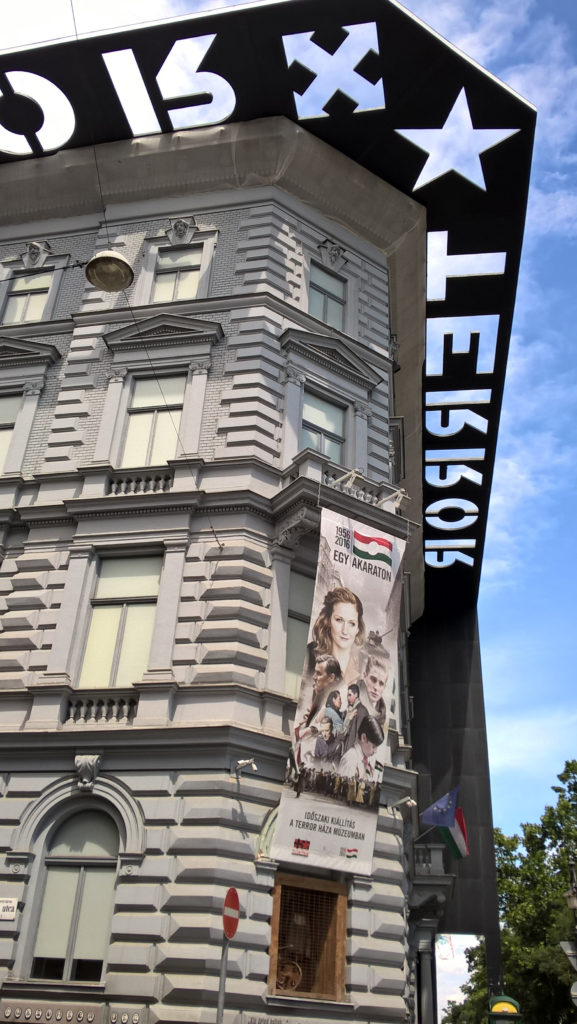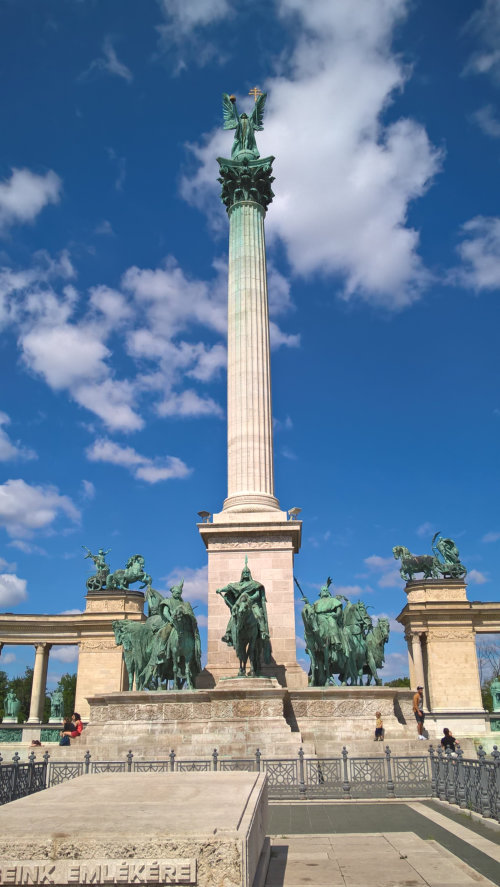On a recent trip to Budapest for a friend’s wedding we visited the House of Terror at 60 Andrássy Avenue.

Andrássy Avenue runs in a straight line for about 1.5 miles from the centre of Pest to Heroes’ Square. It is one of the grandest streets in Budapest and is home to the opera house and many lavish residences and apartment buildings.

Andrássy Avenue was actually renamed three times during the 1950s, something that must have had the postman tearing his hair out. In 1950 it became Stalin Street as a result of the Soviet occupation. In the 1956 Uprising it was briefly called the Avenue of Hungarian Youth but this optimistic sounding name was changed again in 1957 to People’s Republic Street. With the fall of communism in 1990 the name reverted to its original Andrássy Avenue.
60 Andrássy Avenue was built in 1880 but in 1937 the Hungarian National Socialist movement, otherwise known as the Arrow Cross Party, rented space there. In 1944 the building, known then as the House of Loyalty, was the headquarters of the Hungarian Nazis. From 1945 to 1956 the building housed the ÁVO or Hungarian secret police, part of the Communist regime.
Symbols of both regimes (the arrow cross and Soviet star) are now displayed in the rather forbidding black canopy that juts out from the roof of the building.
The building is now a museum commemorating the victims of both regimes and, as it says in the guidebook:
reminding us of the dreadful acts of terrorist dictatorships
You’re not allowed to take photographs inside the building. In the inner courtyard on the ground floor a tank stands in front of a wall covered from top to bottom in photographs of victims of the two regimes. The exhibition starts on the second floor where you are led through a series of rooms showing footage of the siege of Budapest and the Hungarian Uprising. There are lots of harrowing eye-witness accounts and interviews with survivors.
Some rooms are set out as they would have been during the period. There’s quite a collection of recording equipment used for spying and interrogations.
From the first floor an elevator descends, very slowly, into the basement whilst a film is shown about the method used in the building to kill people. This is truly gruesome stuff. The basement is by far the scariest part of the building with its rows of dingy concrete prison cells, each one no more than a few feet square.
The House of Terror is not a pleasant experience, but I think it’s an important place to visit, reminding us of the dangers of extremist politics.